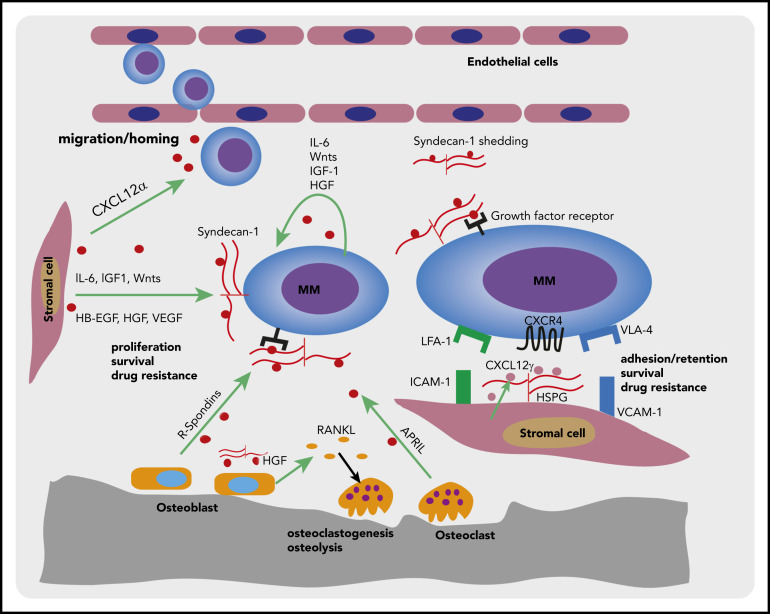Figure 2.
Syndecan-1 and BM stromal HSPGs in the interaction of MM plasma cells with the BM microenvironment. Schematic representation of a MM plasma cells interacting with different components of the BM microenvironment. Specialized, CAR-like niche cells in the BM microenvironment secrete high levels of CXCL12α, which steers (MM) plasma cells migration/homing to the BM. The distinct cell types in the BM microenvironment, including BMSCs, hematopoietic cells, osteoblasts, and osteoclasts, as well as the MM cells themselves, produce various survival/growth factors and cytokines. Membrane-bound syndecan-1 can bind many of these soluble factors and present them to their cognate receptors, thereby promoting MM cell proliferation and survival. Furthermore, syndecan-1 shed by MM cells may act as a reservoir for soluble factors, including mediators of angiogenesis and osteoclastogenesis. In addition, by expressing HSPG-bound CXCL12γ on their cell membrane, CAR-like stromal niche cells can engage the chemokine receptor CXCR4 on MM cells, promoting MM cell retention, survival, and drug resistance.

